Navigating the maze of parking garage lighting code requirements can be daunting. At PacLights, we understand the critical role these regulations play in ensuring safety and efficiency.
This guide will walk you through the essential standards, from illumination levels to energy efficiency mandates. We’ll break down complex codes into actionable insights, helping you create well-lit, compliant parking structures.
What Are Parking Garage Lighting Codes?
National and Local Regulations
Parking garage lighting codes form a complex network of national and local regulations. These codes ensure safety, efficiency, and uniformity in parking structures. At the national level, organizations like the Illuminating Engineering Society (IES) and the National Fire Protection Association (NFPA) establish baseline standards. The IES recommends a minimum horizontal illuminance of 2 lux for basic visual tasks and hazard detection. The NFPA requires at least 1 foot-candle of illumination in emergency exit pathways.
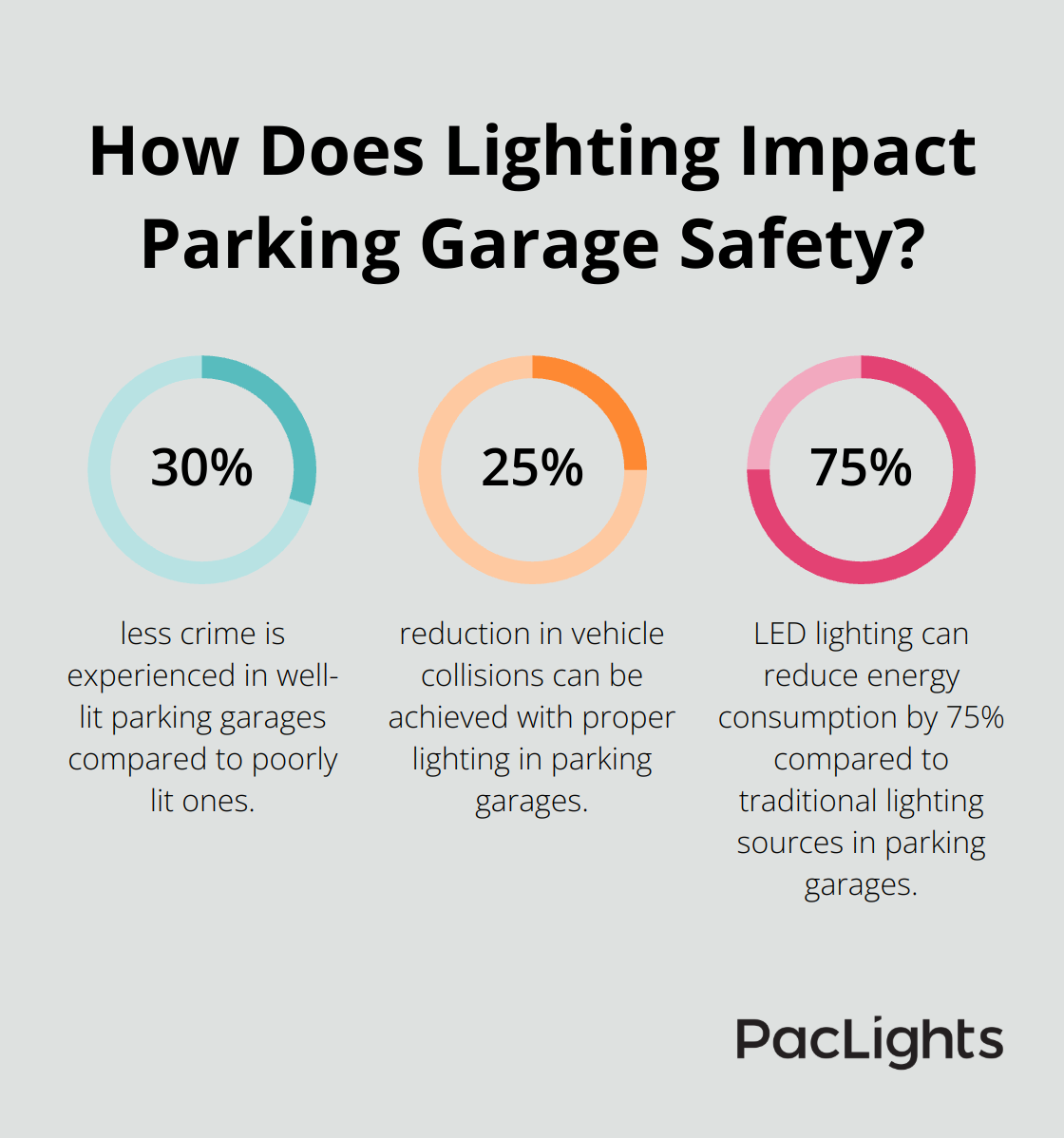
Local regulations often expand on these national standards, adding specific requirements tailored to regional needs. Some cities implement stricter light pollution controls or energy efficiency mandates. It’s important to check with your local building department for the most up-to-date requirements in your area.
Key Standard-Setting Organizations
Several organizations shape parking garage lighting standards:
- Illuminating Engineering Society (IES): Provides comprehensive guidelines for lighting levels, uniformity, and color rendering in parking structures.
- National Fire Protection Association (NFPA): Focuses on emergency lighting and fire safety standards.
- International Code Council (ICC): Develops the International Building Code, which includes provisions for parking garage lighting.
- U.S. Department of Energy (DOE): Offers energy efficiency guidelines and incentives for upgrading to more efficient lighting systems.
Safety Benefits of Compliance
Adherence to lighting codes creates safer parking environments. Well-lit parking garages experience 30% less crime compared to poorly lit ones (International Parking Institute). Proper lighting can reduce vehicle collisions by up to 25% (Lighting Research Center). These statistics highlight the importance of following lighting standards for user safety.
Efficiency Advantages
Efficiency is another key factor in lighting code compliance. The U.S. Department of Energy notes that LED lighting can reduce energy consumption by up to 75% compared to traditional lighting sources. This translates to significant cost savings over time, especially considering that parking garage lights often operate 24/7.
Evolving Standards
Lighting technology continues to advance, and codes evolve to keep pace. Staying informed about the latest updates is essential for maintaining compliance and maximizing the benefits of your lighting system. Regular audits and assessments (every 2-3 years) help ensure your parking garage lighting meets current standards and operates at peak efficiency.
As we move forward, let’s examine the specific lighting requirements that these codes mandate for different areas within parking garages.
Essential Lighting Requirements for Parking Garages
Illumination Levels for Different Areas
The Illuminating Engineering Society (IES) sets specific standards for various areas within parking structures. Basic parking areas require a minimum horizontal illuminance of 1.0 foot-candle (fc). Ramps need a minimum of 2.0 fc during the day, while entrances demand up to 50.0 fc for the first 20 meters to ensure safe transitions from outside to inside.
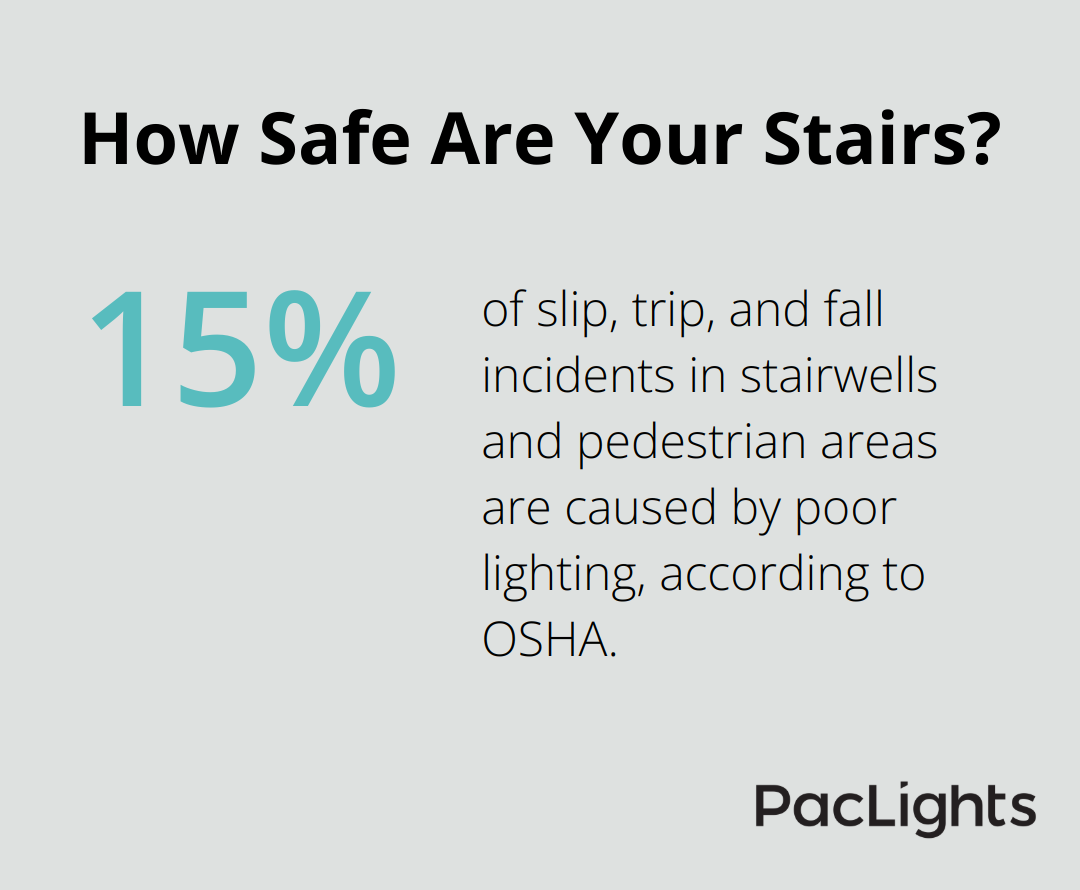
Stairwells and pedestrian pathways require special attention. The Occupational Safety and Health Administration (OSHA) reports that poor lighting contributes to 15% of slip, trip, and fall incidents in these areas. To reduce this risk, maintain a minimum of 10 fc in stairwells and along main pedestrian routes.
Light Uniformity and Distribution
Uniform lighting reduces shadows and enhances overall visibility. The IES recommends a maximum-to-minimum illuminance uniformity ratio of 3:1 for parking areas. This means the brightest spot should not exceed three times the brightness of the darkest spot in the same area.
Strategic fixture placement achieves this uniformity. A “batwing” light distribution pattern (which reduces up-light while providing uniform ground illumination) proves effective. When designing your lighting layout, align luminaires with driving directions to minimize glare for drivers.
Color Quality and Temperature
Color rendering index (CRI) and color temperature significantly impact safety perception and user experience in parking garages. The U.S. General Services Administration recommends a minimum CRI of 70 for parking garage lighting. This ensures accurate perception of objects and people, enhancing safety and security.
Cooler color temperatures between 4500K and 6500K work most effectively in parking garages. These higher color temperatures create a perception of increased brightness and safety, particularly important in enclosed spaces like parking structures.
Energy Efficiency and Controls
Meeting illumination standards remains important, but energy efficiency deserves equal consideration. The U.S. Department of Energy reports that LED lighting can reduce energy consumption by up to 75% compared to traditional lighting sources. This significant reduction lowers operational costs and helps meet increasingly stringent energy codes.
Smart controls further enhance energy savings. Motion sensors and daylight harvesting systems optimize energy use in less-trafficked areas. For example, stairwell fixtures equipped with occupancy sensors provide necessary illumination only when needed, reducing energy waste while maintaining safety standards.
Emergency Lighting Considerations
Emergency lighting plays a critical role in parking garage safety systems. The code recommends at least 1 foot-candle of illumination for emergency exit pathways. This system should maintain a minimum of 1 fc along emergency exit pathways.
Integrating these emergency lighting requirements seamlessly with your general lighting plan ensures both everyday functionality and preparedness for potential emergencies. This integration forms the foundation for a comprehensive lighting strategy that addresses both safety and efficiency concerns.
As we move forward, let’s examine the specific code considerations that shape these lighting requirements and how they impact the overall design and implementation of parking garage lighting systems.
How Specific Codes Shape Parking Garage Lighting
Emergency and Exit Lighting
The National Fire Protection Association (NFPA) sets strict emergency lighting standards for parking garages. These systems must provide illumination along emergency exit pathways for a minimum of 90 minutes during power outages. This requirement ensures safe evacuation in crisis situations.
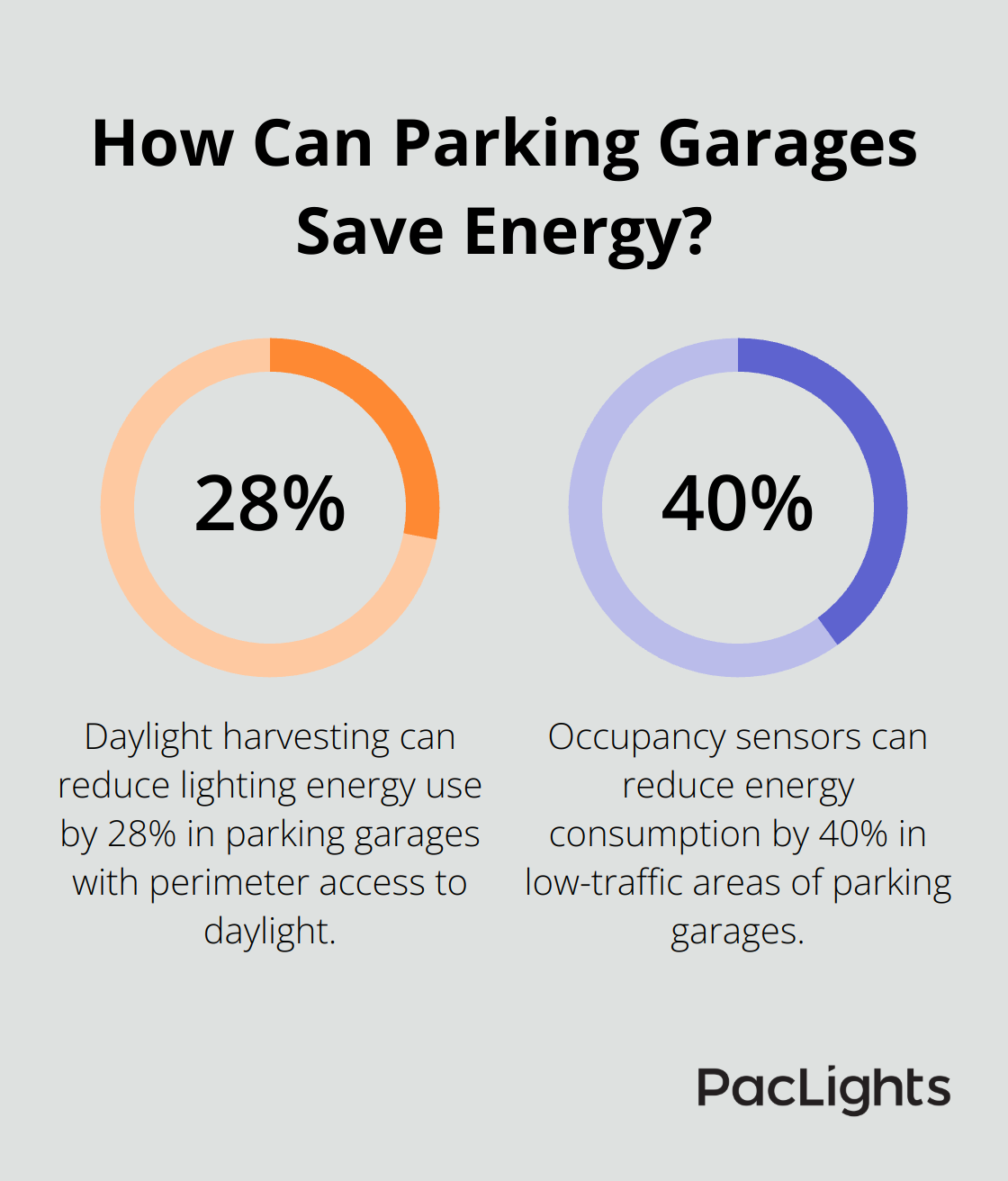
To meet these standards, install dedicated emergency lighting fixtures with built-in battery backups. Place these fixtures strategically along exit routes, stairwells, and near elevators. Regular testing of these systems is essential – conduct monthly function checks and annual 90-minute duration tests.
Daylight Harvesting and Lighting Controls
Many modern building codes now require daylight harvesting systems in parking garages with access to natural light. These systems use photosensors to adjust artificial lighting levels based on available daylight, which significantly reduces energy consumption.
A study by the Lawrence Berkeley National Laboratory found that daylight harvesting can reduce lighting energy use by up to 28% in parking garages with perimeter access to daylight. To implement this effectively, install photosensors near windows or openings and connect them to dimmable LED fixtures.
Occupancy sensors are another important component of modern parking garage lighting controls. These sensors can reduce energy consumption by up to 40% in low-traffic areas of the garage. Use ultrasonic or dual-technology sensors for optimal coverage in the complex layout of parking structures.
Energy Efficiency Standards
Energy codes push for more efficient lighting solutions in parking garages. The International Energy Conservation Code (IECC) sets specific power density limits for parking garage lighting. As of the 2021 code, the maximum allowed lighting power density for parking garages is 0.18 watts per square foot.
LED lighting is now the preferred solution to meet these standards. LEDs can reduce energy consumption by up to 75% compared to traditional lighting sources (according to the U.S. Department of Energy). When selecting LED fixtures, choose those with a minimum efficacy of 100 lumens per watt to ensure optimal energy efficiency.
Light Pollution Restrictions
Many municipalities now require full cut-off fixtures in parking garages to minimize light trespass and sky glow. These fixtures direct light downward, which reduces glare and improves visibility for drivers and pedestrians.
The International Dark-Sky Association recommends using fixtures with a correlated color temperature (CCT) of 3000K or lower to minimize blue light emissions (which can disrupt local ecosystems and human circadian rhythms). However, balance this with the need for cooler color temperatures (4000K-5000K) that enhance visibility and safety perception in parking environments.
Implementation Considerations
Implementing these specific code considerations requires careful planning and expertise. The initial investment may be higher, but the long-term benefits in safety, energy savings, and environmental stewardship are substantial. As lighting technology continues to evolve, stay informed about these code requirements to create efficient, safe, and compliant parking garage lighting systems.
Parking garage lighting code requirements ensure safety, efficiency, and uniformity in parking structures. Organizations like the IES and NFPA set standards for illumination levels, light distribution, emergency lighting, and energy efficiency. These regulations create well-lit, secure environments that reduce crime and vehicle collisions while optimizing energy consumption.
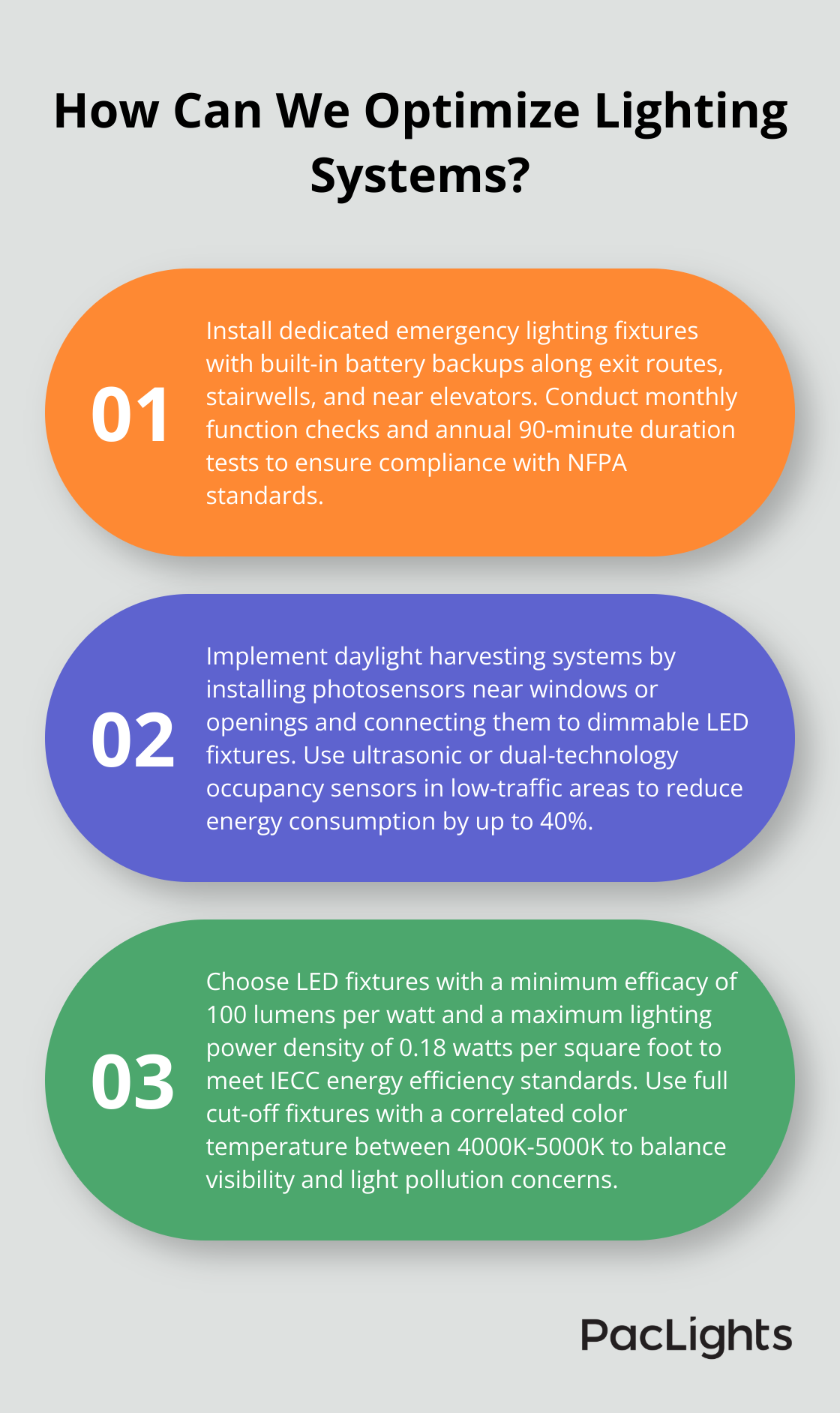
Lighting technology and regulations continue to evolve. Facility managers and property owners must stay informed about the latest updates in parking garage lighting code requirements. Regular audits and assessments help maintain compliance and maximize the benefits of lighting systems.
PacLights understands the challenges of meeting complex lighting requirements. Our range of parking garage lighting solutions helps achieve compliance while optimizing energy efficiency and safety. We offer high-performance LED fixtures and advanced control systems to create well-lit, code-compliant parking environments.


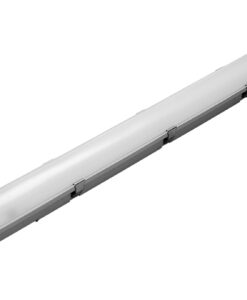
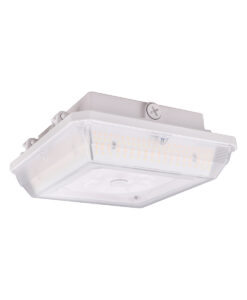
Disclaimer: PacLights is not responsible for any actions taken based on the suggestions and information provided in this article, and readers should consult local building and electrical codes for proper guidance.